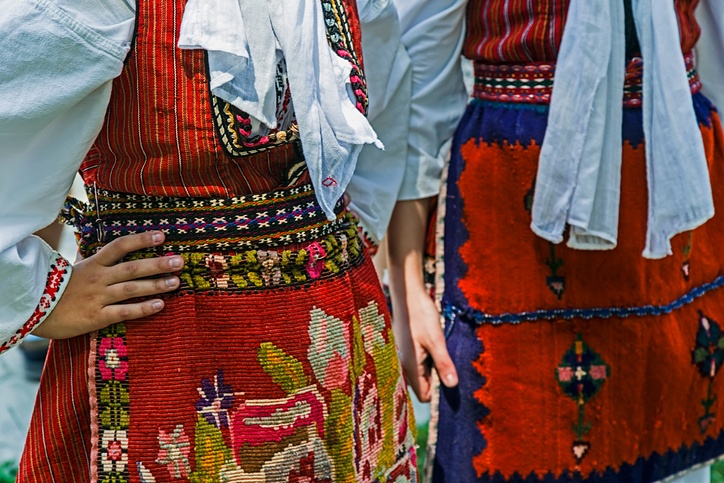Summer is a season of festivities, from national events to personal celebrations such as weddings. Your host country likely has its own wedding customs, and in one country a traditional wedding has become an important event for both preserving cultural heritage and tourism: North Macedonia’s Galičnik Wedding Festival.
While you can count the number of year-round residents of the village of Galičnik on one hand, the population swells in summer with tourists as well as family and friends celebrating a couple’s marriage. While traditionally a couple had to have some family connection to the village, today any North Macedonian couple can apply to take part. One couple is chosen among the many applicants to represent the country during the festival.
While the ceremonies used to last a week, now they have been compressed into a few days to make them easier for visitors to understand. Key events include the groom visiting the cemetery to invite dead relatives to the wedding, shaving the groom at the town fountain, an entourage of flag-bearers and horses parading to the bride’s house to officially ask for her hand, and the groom’s mother carrying a kettle to splash well-wishers on the way to the church. All participants wear the country’s traditional folk costumes, with the bride dressed in red, white, and gold. The men perform a traditional Teškoto dance.
Though the official festival only dates back to the last century, some of the traditions presented are hundreds of years old. Even the drum and oboe-like zula played are of Indian origin, which may date back to the era of Alexander the Great. This history led North Macedonia to apply for, and be granted, the protected status of Intangible Cultural Heritage for the ceremonies.
One of the most enjoyable parts of living in a new country is getting to know the local history and customs. Check out our new North Macedonia content for more about this unique Balkan country, and know that you can continue to rely on Living Abroad’s information for details about any of the more than one hundred and fifty countries covered in the IRC.
Written by Kate Havas, GMS-T, Content Manager

